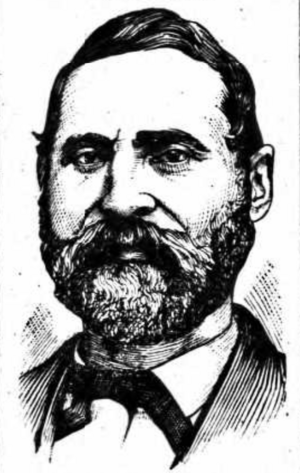Robert H. Robinson facts for kids
Robert H. Robinson (1824–1909) was an important leader. He was a minister and worked hard for the rights of African Americans. This was during a time called the Antebellum period. He lived in Arlington, Virginia.
Robert was born into slavery. But his grandmother, Caroline Branham, helped him gain his freedom. He became free at age 21 after learning a trade for eleven years. He later became a minister at Roberts Chapel. This was an African Methodist Episcopal Church. He also started a night school and a debate team. These helped black people who were no longer enslaved. The Robert H. Robinson Library is named after him.
Early Life and Freedom
Robert H. Robinson was born into slavery in 1824. His mother was Lucy Branham. His grandmother was Caroline Branham. His slaveholder was George Washington Parke Custis. Custis was the grandson of Martha Washington.
In the 1820s, Caroline Branham made a deal. She agreed to be interviewed by a historian named Jared Sparks. In return, Robert would be freed. In 1834, Robert was sold to a Quaker named Miller. He then became an apprentice to Robert Jamieson. Jamieson was a banker and businessman from Arlington. During this time, Robert learned to read and do math. He finally became a free man in January 1846. He was 21 years old.
A Career of Service
Robert H. Robinson became a minister. He was ordained by Bishop Matthew Simpson. Bishop Simpson was a spiritual adviser to Abraham Lincoln. Robert served as a pastor at Roberts Chapel. This was a Methodist Episcopal Church in Alexandria. It was started by African Americans.
He helped create the Western Conference of the Methodist Episcopal Church. This was the first conference for African Americans. From 1872 to 1876, he was the first African American member. He served on the Board of Church Extension Society. In 1883, he moved to Charleston, West Virginia. By 1894, he was a minister in Cumberland, Maryland. Throughout his life, he led churches in many states. These included Virginia, West Virginia, Pennsylvania, and Maryland.
Robinson also worked to create chances for freed black people. He opened a night school. He also started a debate club. He was the treasurer for the William McKinley Normal and Industrial School. This school was in Alexandria.
In 1864, he and his two sons organized a special event. They held one of the first Emancipation Day celebrations. This was for African Americans in the city. Famous people attended this celebration. These included Booker T. Washington, Frederick Douglass, and John Mercer Langston.
Family and Later Years
Robert H. Robinson got married on September 23, 1847. His sons started an African American newspaper. It was called The Washington National Leader. It was also known as The Leader. His son R.B. was the business manager. His son Magnus was the managing editor. Frederick Douglass, Jr. was also an editor.
He became a leader in the Freemasons. He was the fourth Grand Master for the District of Columbia in 1854. He also became a Grand Master in West Virginia in the 1880s. In 1883, he was called the "oldest living Past Grand Master of Masons."
Robert H. Robinson passed away on November 22, 1909. In 1911, a tall monument was built for him. It is at the Bethel Cemetery in Alexandria, Virginia. His sons, Rev. R.B. Robinson and Magnus L. Robinson, put it there. His wife and sons are also buried near him.
His Lasting Legacy
The Robert H. Robinson Library is named in his honor. It is part of the Alexandria Black History Museum.
He is also remembered on a monument. It is called Truths that Rise from the Roots. This monument is in Alexandria, Virginia.


